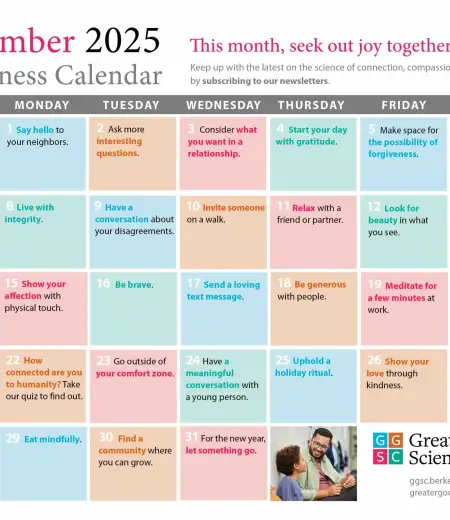Like many pieces of advice, the age-old adages to “put yourself in someone else’s shoes” or “see the world from someone else’s perspective” can sound painfully naïve. Indeed, they seem to go against human nature, serving as moralistic attempts to rein in our tendencies toward self-interest. Can we truly understand what other people are thinking or feeling—and if so, how?
Those are the questions at the heart of four essays in this issue of Greater Good, which homes in on the human capacity for empathy. It’s not always clear what the term “empathy” means and how it differs from other concepts, like sympathy. Within this issue, we highlight what is sometimes called “perspective taking”: understanding what another person is seeing and feeling to the point that you actually begin to feel those same emotions yourself. (By contrast, sympathy involves recognizing the suffering of another person and feeling sorry for that person, but not sharing his sad or distressed emotions.)
With that definition of empathy in mind, it’s not hard to see why we should try to cultivate it. Perspective taking enables us to recognize the humanity we share with others, even if they are our political enemies or the most marginalized members of our society. Our sense of justice and fairness stems from our ability to really understand other people’s emotions, and therefore respond to their suffering.
New research has shown that it’s not just wishful thinking to believe that humans possess these empathic skills. In fact, there’s a biological basis to the empathy that supports so much of our morality. Some scientists have begun to map out regions of the brain that light up when we imagine another person’s emotional experience, while other researchers have identified some of the social conditions and experiences that enhance our empathic instincts. Contributors to this issue of Greater Good report on the promise—and the potential limits—of this research.
To shed light on the biological roots of empathy in humans, noted primatologist Frans de Waal looks carefully at other species. His own research has documented the surprising prevalence of empathy in other animals, suggesting its long evolutionary history. De Waal’s engaging reports of empathy among different species challenge the idea that empathy is just a social construct. Rather, it implies that we have a deep-seated capacity for moral, caring behavior that stretches back thousands of years.
But if that’s the case, why don’t we see more of this legacy of empathy in the world around us? The other contributors identify factors that undermine the expression of empathy—and offer suggestions for overcoming them.
In her essay, Arlie Hochschild finds inspiration in the acts of empathy and generosity that followed Hurricane Katrina, but she wonders why we don’t see similar gestures toward the millions of other Americans living in poverty. She pinpoints a confluence of social and political factors that are stunting the expression of empathy in the United States today. Drawing attention to this “empathy squeeze,” as she calls it, is an essential step toward recognizing how we’ve fallen short in our sense of responsibility and connection to other people, and it’s a precondition for reclaiming our empathic impulses.
And it’s not just broad social conditions that can affect our ability for empathy. In their essay, family researchers Carolyn Cowan, Phil Cowan, and Neera Mehta identify the circumstances in a romantic relationship that can prevent people from expressing empathy toward their spouse or partner. Surveying decades of research, the authors offer suggestions for overcoming these obstacles and fostering the empathy that’s vital to compassionate, understanding, and long-lasting relationships.
Though we usually think of empathy as something we cultivate through our social bonds, psychologist and novelist Keith Oatley explains how we can also develop it in solitude: by reading. Oatley’s essay elevates the way we think about literature and other works of art, revealing their power to nurture our emotional lives and extend our social connections.
These essays do not deny that humans are capable of great selfishness and insensitivity, and that there’s sometimes no greater challenge than simply getting out of our own skin and identifying with another human being. But this review of the science and practice of empathy illustrates many of the ways that we’re capable of meeting that challenge. While the advice to “see from another person’s perspective” may at times sound unrealistic, the contributors to this issue of Greater Good make clear that it’s advice we can learn to follow.





Comments